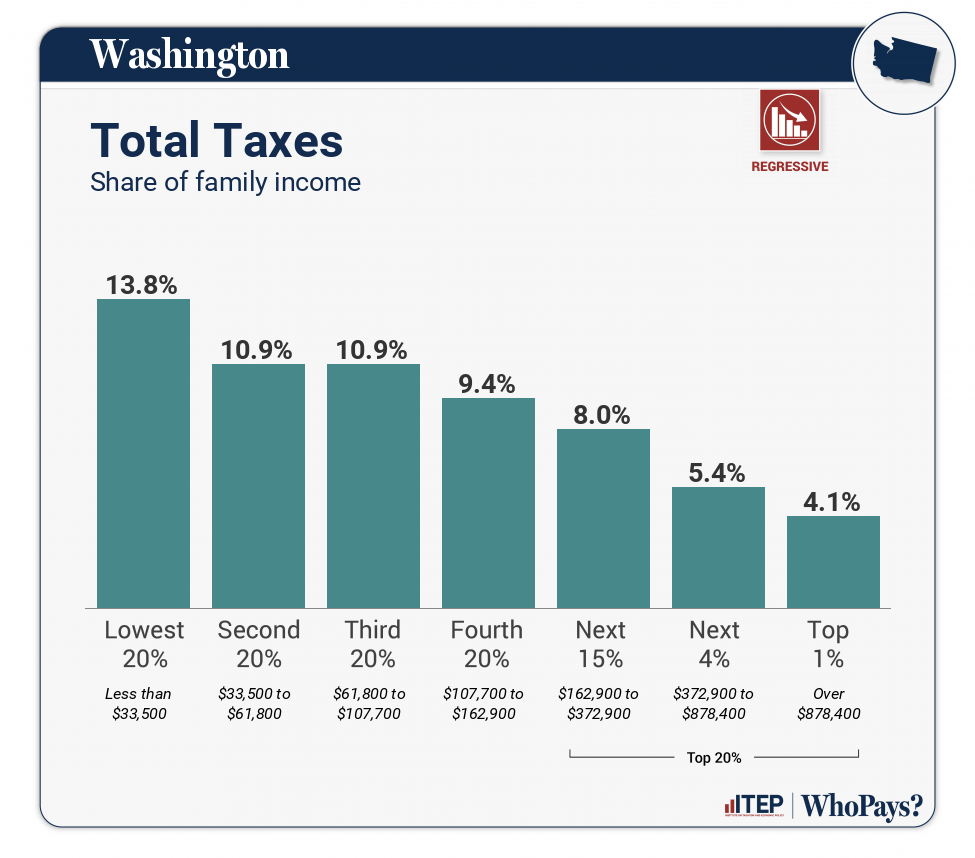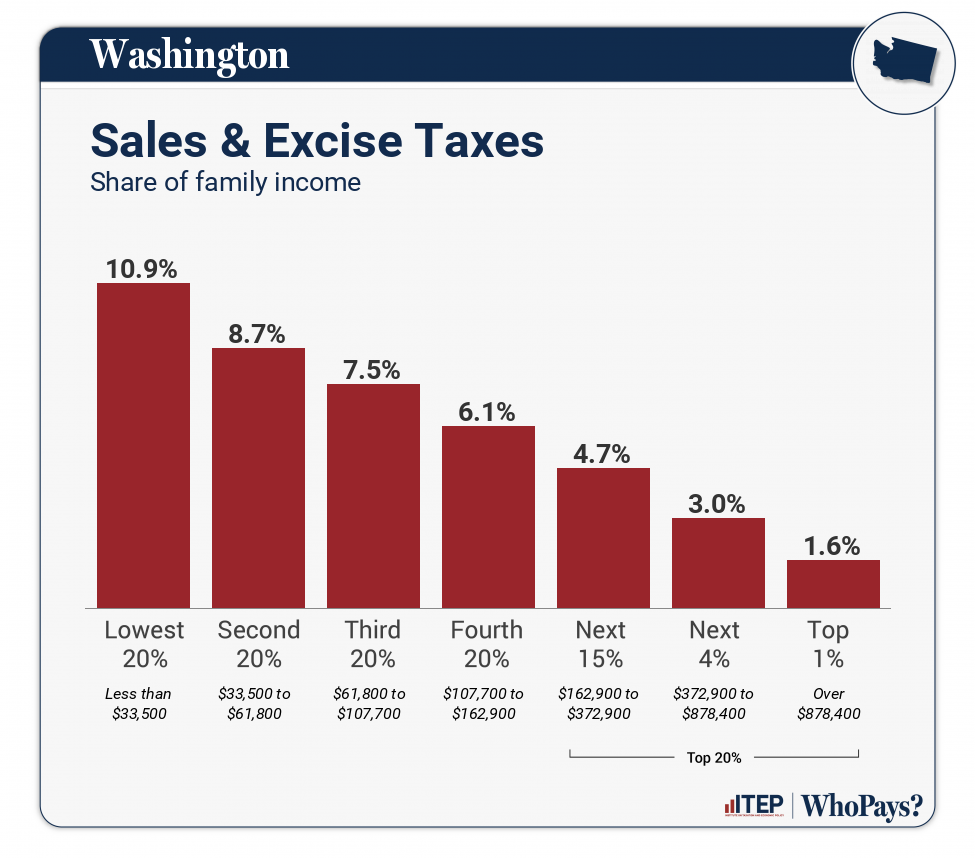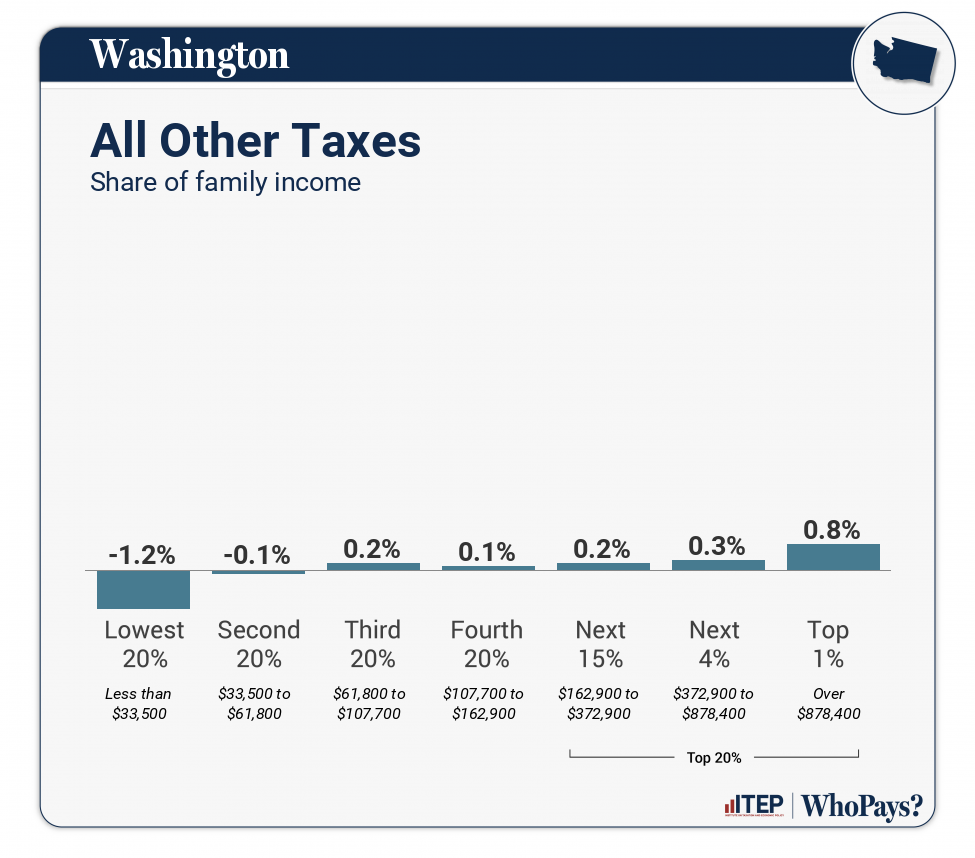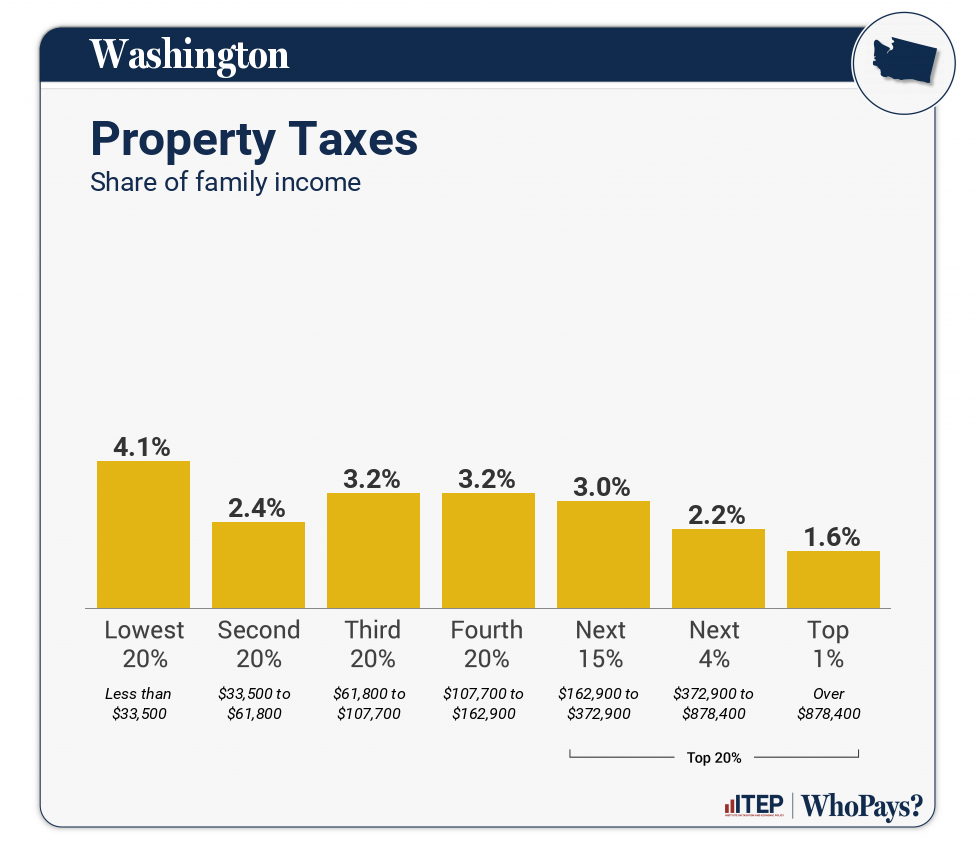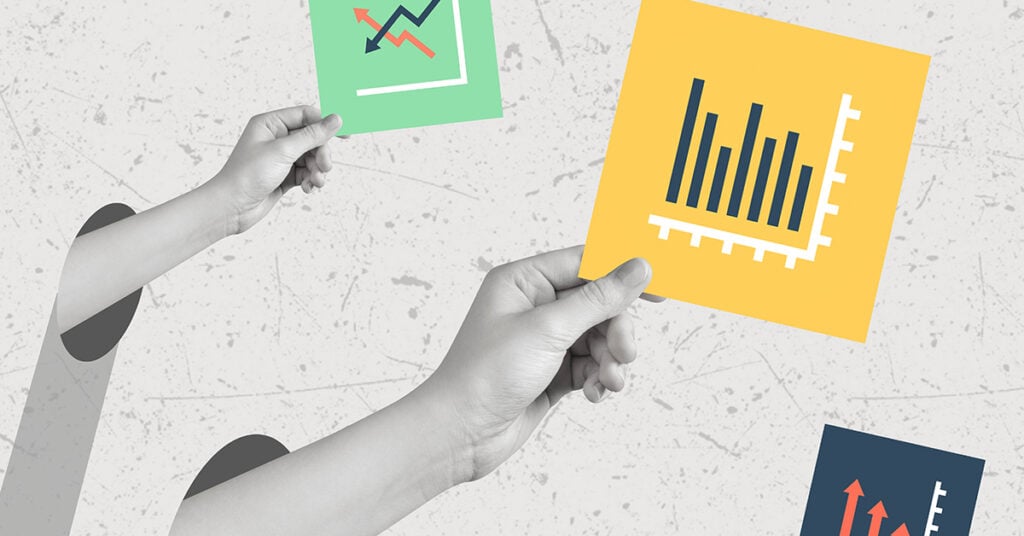
Washington
Download PDF
State and local tax shares of family income
| Top 20% | |||||||
| Income Group | Lowest 20% | Second 20% | Middle 20% | Fourth 20% | Next 15% | Next 4% | Top 1% |
| Income Range | Less than $33,500 | $33,500 to $61,800 | $61,800 to $107,700 | $107,700 to $162,900 | $162,900 to $372,900 | $372,900 to $878,400 | Over $878,400 |
| Average Income in Group | $18,600 | $47,400 | $82,400 | $132,800 | $235,600 | $537,800 | $2,077,500 |
| Sales & Excise Taxes | 10.9% | 8.7% | 7.5% | 6.1% | 4.7% | 3% | 1.6% |
| General Sales–Individuals | 4.7% | 4% | 3.5% | 2.8% | 2.1% | 1.2% | 0.4% |
| Other Sales & Excise–Ind | 2.8% | 1.7% | 1.3% | 1% | 0.8% | 0.4% | 0.2% |
| Sales & Excise–Business | 3.4% | 3% | 2.7% | 2.2% | 1.9% | 1.4% | 1.1% |
| Property Taxes | 4.1% | 2.4% | 3.2% | 3.2% | 3% | 2.2% | 1.6% |
| Home, Rent, Car–Individuals | 3.6% | 1.9% | 2.7% | 2.7% | 2.5% | 1.6% | 0.5% |
| Other Property Taxes | 0.5% | 0.5% | 0.5% | 0.5% | 0.5% | 0.6% | 1.1% |
| Income Taxes | -1.4% | -0.3% | 0% | 0% | 0.1% | 0.2% | 0.7% |
| Personal Income Taxes * | -1.4% | -0.3% | 0% | 0% | 0.1% | 0.2% | 0.7% |
| Corporate Income Taxes | 0% | 0% | 0% | 0% | 0% | 0% | 0% |
| Other Taxes | 0.2% | 0.2% | 0.2% | 0.1% | 0.1% | 0.1% | 0.1% |
| TOTAL TAXES | 13.8% | 10.9% | 10.9% | 9.4% | 8% | 5.4% | 4.1% |
| Individual figures may not sum to totals due to rounding. | |||||||
| * Washington state provides a tax rebate to low-income households structured with similar eligibility requirements to the federal Earned Income Tax Credit (EITC), and levies a tax on the sale or exchange of certain capital assets, structured as an excise tax for the purposes of state law and upheld as such by the state Supreme Court in 2023. For the purposes of this 50-state study, we include the Capital Gains Excise Tax and the Working Families Tax Credit on the income tax line to improve comparability of our results to other states that accomplish similar objectives within their income tax codes. | |||||||
ITEP Tax Inequality Index
ITEP’s Tax Inequality Index measures the effects of each state’s tax system on income inequality. According to this measure, Washington has the 2nd most regressive state and local tax system in the country. Income disparities are larger in Washington after state and local taxes are collected than before. (See Appendix B for state-by-state rankings and the report methodology for additional detail.)
Tax features driving the data in Washington
|
Graduated rate structure for the real estate transfer tax
Refundable working families tax credit, starting in 2023
Progressive Payroll Expense Tax in city of Seattle
Stand-alone tax on long-term capital gains
Sales tax base excludes groceries
Levies a state estate tax
|
|
|
No property tax “circuit breaker” credit for low-income, non-senior taxpayers
Imposes a gross receipts tax in lieu of a corporate profits tax
Comparatively high combined state and local sales tax rates
Comparatively high reliance on sales and excise taxes
No broad-based personal income tax
No Child Tax Credit (CTC)
|

